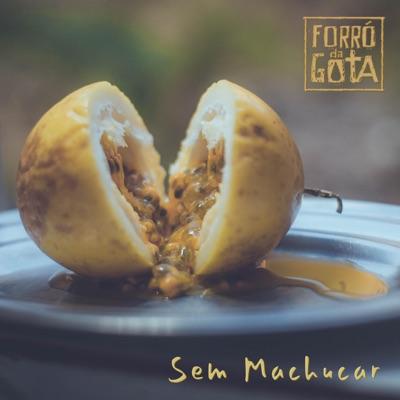
Let's find out which types of sugar are bad and how to replace them with natural sweeteners.
The enemy of the organism: white sugar
Let's immediately highlight something that many of you readers already know: white sugar is poison. It hurts for two main reasons (along with many other related ones):
- Raise insulin
- Promotes diabetes.
In itself, sugar in its natural state would simply be a derivative of sugar beet or sugar cane consisting of two simple sugars: glucose and fructose. They are all subsequent processes (purification with lime, carbonation, sulphitation, filtration) to create the poison that is for sale within everyone's reach.
When you take sugar, it enters the blood, already 5 minutes after taking it and stimulates insulin, a hormone that presides over the synthesis of fats. The intestine is fatigued, the whole organism is affected. You enter the acidosis process. In practice, the "system" can no longer rely on insulin and then you go to "eat" the stocks of vitamins of the B and PP groups and amino acids. It goes wild hyperacidity.
The first reserve that is called into question is that of calcium, when a similar alteration of the acid-base system occurs. Here, possible caries appear on the horizon and the way opens for the symptoms of osteoporosis.
The organism produces a greater quantity of triglycerides and this increases the predisposition to arteriosclerosis and diabetes.
Sugar-free sweets? Here are 3 simple recipes
Other enemies: aspartame, saccharin and acesulfame-K, the fake raw sugar
THEAspartame it is found in diet foods, carbonated drinks, chewing gum, but it is also present in pharmaceuticals and synthetic vitamins. Some very sensitive individuals react immediately with strong allergic reactions, migraines, convulsions, lymphomas and neoplasms. Inside aspartame we find 10% of methanol, toxic poison that is released in the intestine when the methyl group of aspartame meets chymotrypsin, a specific enzyme.
Main responsible for urinary tract neoplasms - according to a study by Canada’s Health Protection Branch, saccharin is another enemy to beware of. Inside is cyclamate, highly toxic and carcinogenic.
The production of insulin is also increased by theacesulfame-K. Also called acesulfame potassium, it has a sweetening power equal to 160-250 times that of sucrose, equal to that of removing, 4 or 5 times greater than that of cyclamate and equal to half that of saccharin.
Attention to the raw cane sugar (not wholemeal). Beige in color, as it does not undergo the bleaching process, it is made up of crystals of a regular shape equal to each other: it is often sold as raw sugar, but in reality it is “masked” with molasses and caramel coloring.
It does not contain any type of vitamin or mineral, it only provides "empty" calories, it is basically a food that is already dead, just like white sugar.
Learn about stevia, its properties and how to grow it
Valid natural sweeteners alternatives
After this terrifying scenario, here are some solutions for those who really love each other.
- Raw cane sugar: how to recognize it? AND' darker and grainy compared to the non-integral one. Obtained from crushed sugar cane with artisanal method; the resulting juice is boiled and filtered, dried and pulverized. Rich in potassium, B vitamins and PP. Has a lower calorie level and a healing power (especially the Panela, Dulcita, Mascobado typology).
- Grain malt: an extraordinary remineralizer. It comes from cooking the cereal with the addition of sprouted barley. Contains maltose, dextrin and mineral salts. Its sugars are slowly absorbed and among the minerals we mention: calcium, iron, magnesium. On sale you will also find products that bear the words: "malt extract of ..." on the sticker; do not give up, these products are enemies of insulin, they make it reach dizzying levels.
- Coconut Palm Sugar: Natural sweetener that is becoming more and more popular. It has good nutrients and a relatively low glycemic index.
- Plama sugar: from don't get confused with coconut sugar either coconut palm sugar, is made by hand by tying the flower buds, then lightly beaten by hand with a stick and finally cut at the apex to drain the sweetish juice or sap: it is rich in minerals and trace elements, has a low glycemic index and 100 grams of product provide about 380kcal
- Miracle fruit: thanks to the presence of a substance called miraculous, acts on the taste receptors by transforming the taste of any food eaten into sweet after its intake within an hour, however bitter or acid it may be
- Stevia: is a small plant native to South America and used by local curanderos; today it is known for its high sweetening power and is calorie-free. It belongs to the Compositae or Asteraceae family and is easy to grow and self-produce.
- Fructose: friend of blood sugar, keeps it low. It is obtained from the juice produced by the concentration of the fruit and not by its filtration. Provides vitamins and minerals in quantity.
- Maple syrup: comes from the sap of the trunks of Acer saccharum and Acer rubrum, plants native to Canada. Maple syrup purifies and provides calcium, iron, vitamins B1, potassium.
We always remind you that the greatest sweetness can be found in the looks, in seeking contact with people, in feeling the kindness that starts from the heart and moves the hands, the mouth.
Stevia, what contraindications of the natural sweetener?
You can learn more:
> Properties, calories and nutritional values of brown sugar


























